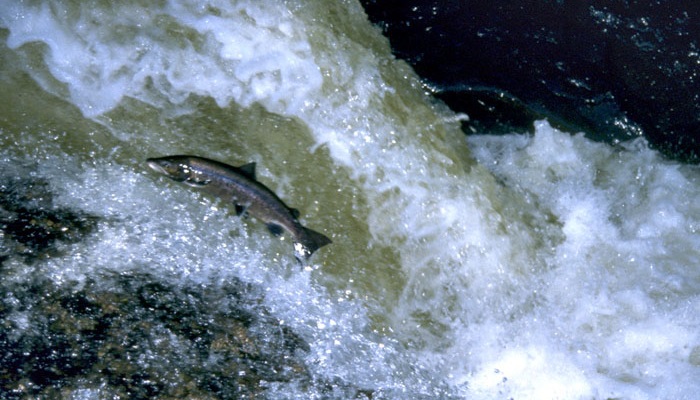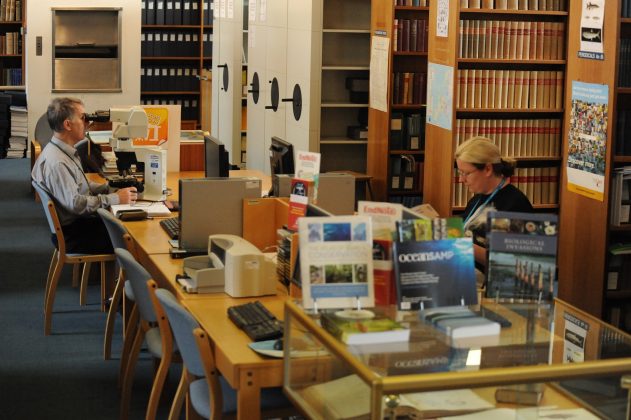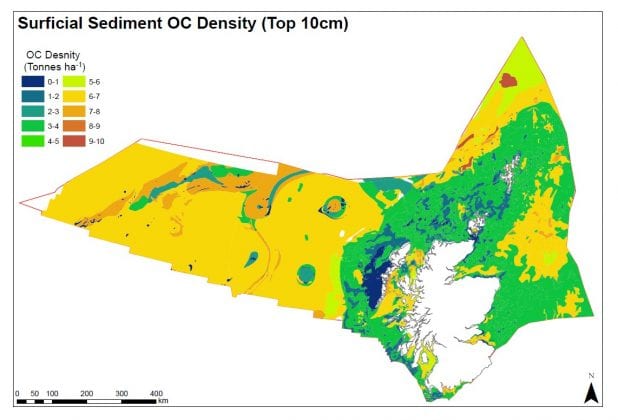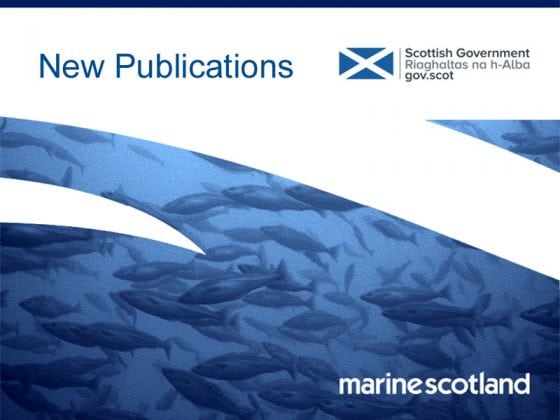Marine
-
COP27 blog series: targeted tree planting provides a nature-based solution
16th November 2022 by Marine Directorate Communications

The Scottish Wild Salmon Strategy aims to reverse the decline of wild salmon by tackling pressures such as changing river temperatures. Trees can reduce river temperatures by reducing the amount of sunlight reaching the water surface, much like natural parasols. By increasing the amount of woodland next to rivers it is possible to reduce some of the effects of climate change on river temperature.
-
Celebrating World Book and Copyright Day
23rd April 2020 by Marine Directorate Communications

To celebrate UNESCO’s World Book and Copyright Day we have a guest blog post to share with you from our very own Librarian, Helen McGregor. Take it away Helen! *************************************************************************** “Books are your ticket to the whole world. The library is the key. That is where the escape tunnel is. All of the knowledge of...
-
New Blue Carbon Resource for Marine Scientists
24th February 2020 by Marine Directorate Communications

Two new science reports have been published today by Marine Scotland Science (MSS) that will be used to improve our understanding and management of Blue Carbon; carbon found stored beneath the sea in sediment, shells and living plants. One is a collaborative project with University of St Andrews ‘Re-Evaluating Scotland’s Sedimentary Carbon Stocks’ and the...
-
New metrics report measures up for assessing the effects of offshore wind on Scotland’s seabird populations
22nd December 2017 by Marine Scotland Communications

Marine Scotland has undertaken a great deal of research to understand how the development of offshore renewables may affect protected seabird species. Central to this work is an assessment of the consequences at population-level, with an important focus on the use of Population Viability Analysis (PVA). The Centre for Ecology and Hydrology (CEH) have produced...
-
Where are the seals around the UK?
21st December 2017 by Marine Scotland Communications

Today, Marine Scotland published a new report in the Scottish Marine and Freshwater Science series on research commissioned from the Sea Mammal Research Unit (SMRU) to produce updated maps of grey and harbour seal distribution in UK waters. Using a combination of telemetry data from seal tags between 1991 and 2016, and haul out counts of...
-
Improvements in detecting toxic phytoplankton
18th December 2017 by Marine Scotland Communications

A new report has been published in the Scottish Marine and Freshwater Science series which details the findings from a new study on toxic phytoplankton. Toxic phytoplankton are a potential threat to the aquaculture industry because of the risk of food product contamination. Shellfish such as mussels for example can accumulate those toxins and become...
-
New report published on Scottish Scallop Stocks: Results of 2016 Stock Assessments
4th December 2017 by Marine Scotland Communications

Today we’ve published the latest in its Scottish Marine & Freshwater Science series – Scottish Scallop Stocks: Results of 2016 Stock Assessments. Scallops are an important species for the Scottish fishing industry. The Scottish commercial dredge fishery for king scallop (Pecten maximus) began in the 1930s in the Clyde. It has since expanded around the coast...
-
Keeping an eye on the coastline with SCObs
23rd January 2017 by Marine Scotland Communications
Scientists in Marine Scotland, along with a small group of voluntary citizen-scientists, have been monitoring the physics, chemistry and biology at multiple sites in Scotland’s coastal waters since 1997. The sites monitored, shown on the left, include Millport, Mallaig, Loch Maddy, Loch Ewe, Scapa, Fair Isle, Scalloway, Cromarty, East Coast and Stonehaven. Consistent ecological time series of data...
-
How do seals interact with shipping vessels?
17th October 2016 by Marine Scotland Communications
As shipping activity continues to increase around the world, understanding the way that marine mammals interact with vessels is of particular importance. Such concerns generally relate to potential harmful effects of increased shipping noise on marine mammals and the potential for physical injury due to collisions. This is a particular issue for harbour seals (Phoca...
-
Calculating shellfish stock figures
22nd June 2016 by Marine Scotland Communications
A new Scottish Marine & Freshwater Science report has been published looking at indicators of changes for Scottish shellfish stocks. Shellfish are important to Scottish fisheries – a total of 61 544 tonnes of shellfish with a value of £150 million were landed by Scottish vessels in 2014. However, for many shellfish stocks, the limited biological data and...




